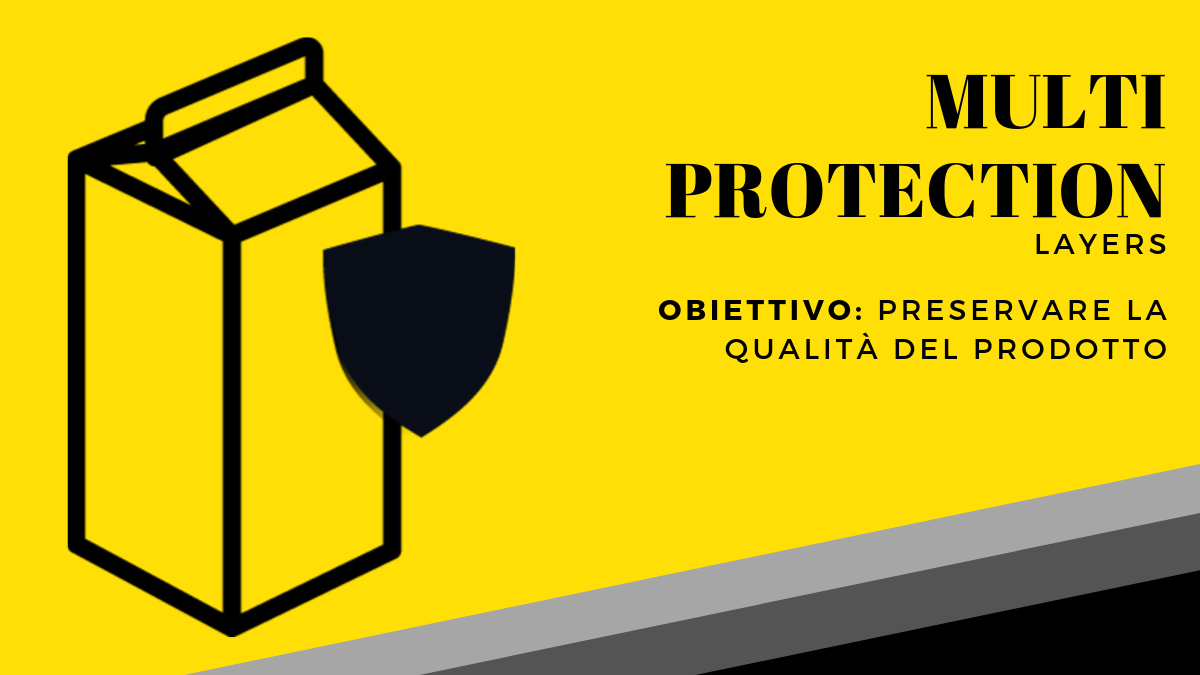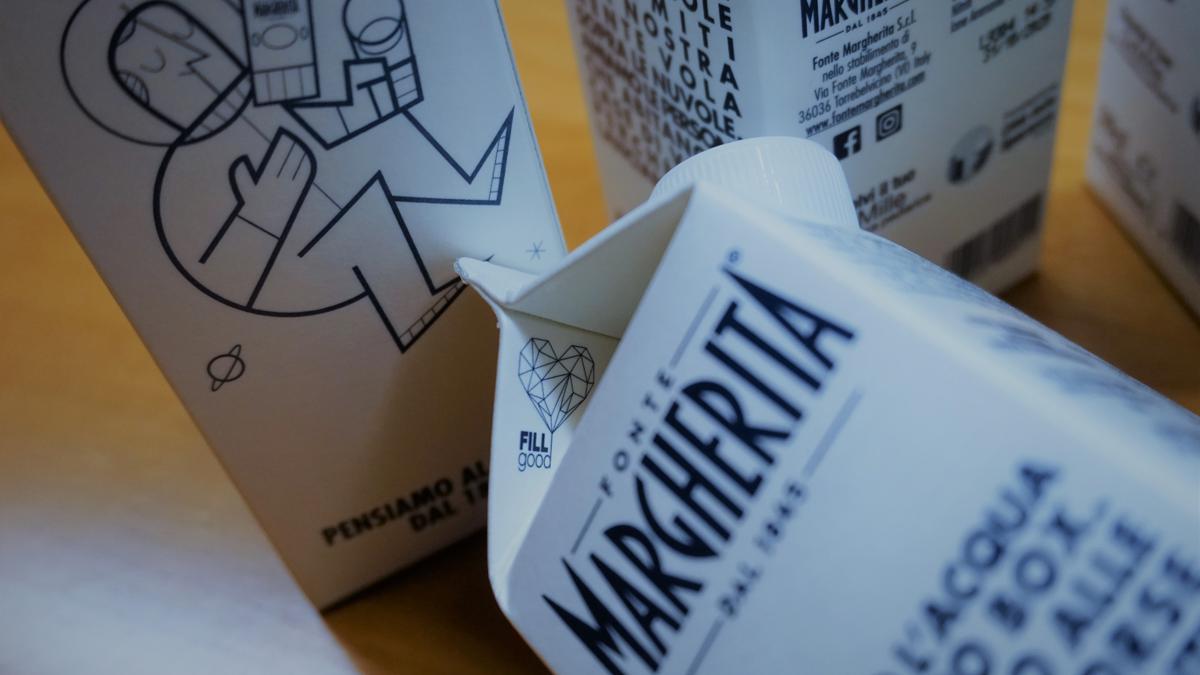PROTECTION LEVELS IN CARTON PACKAGING
01 OCTOBER 2019

Each food product requires a different protection level when it comes to packaging, with the main focus laying on factors accelerating degradation processes or increasing the risks of contamination.
In this article we are going to share a general overview of carton types used in packaging on the market, examining in greater detail a few technical "tricks" to increase the level of protection and, in turn, extend the product's shelf life.
CARTON PROTECTIVE LAYERS
There are 3 main types of packaging cartons for liquid and solid food products; the difference lies in the internal protective layers.
PE CARTON (POLYETHYLENE)
This is your typical polylaminate carton - i.e. made of several polyethylene layers - used for dairy products like fresh milk, with a shelf life of up to 6 days.
Without going into detail about extrusion and layer composition techniques, which vary according to producer, carton can be sorted and selected on the basis of paper density.
When selecting the ideal thickness of a PE carton packaging, many factors need to be taken into account: product type, budget, target market, and marketing goals.
To keep things as simple as possible, a thicker polyethylene carton - though more expensive - ensures:
- more robust packaging
- extended shelf life
- better sealing performance over time
- increased shock-resistance
- better tactile perception for the consumer
On the other hand, thinner PE cartons cost and weigh less - enabling further savings when palletizing and transporting large volumes – and they are a more sustainable option.
EVOH CARTON
This is the packaging of choice for sensitive products such as liquid egg, since it provides an optimum barrier to external gaseous exchange.
Here too, the carton is made of several polyethylene layers; in addition, a polymer film is placed in between, in order to minimize oxygen permeability.
EVOH cartons can therefore guarantee a product with a shelf life of up to 3 months, without adding additives.
ALUMINIUM FOIL CARTON
Aluminium foil carton is characterized by an internal aluminium layer, protecting the package against oxygen and light.
It is therefore the ideal option for products such as fruit juices, oil, wine, and liquid egg.
The insertion of the aluminium foil makes the final packaging more expensive, but also contributes to the product's shelf life - which can be extended up to one year - and improves stability. An aluminium foil carton is more rigid and robust.
PROTECTIVE COMPONENTS IN PACKAGING
In addition to internal layers, other elements help ensure the protective performances of carton packaging.
Sealing is the most important one.
The quality and type of pack sealing play a crucial role in supporting the function of the package's protective layers.
In this regard, the performance of the filling machine and the ability to handle different formats, as well as the accuracy of the format's design, are especially important.
Additional features also increase the level of protection and, in turn, the product's shelf-life, including sixth panels, skiving techniques or so called "super-bottoms", i.e. protection flaps to avoid direct contact between paper (potential source of contamination) and packaged product.
GOAL: MAINTAINING THE QUALITY OF THE PRODUCT
The research and development of packaging materials has always focused on external agents or specific conditions that can alter the proper storage of food products in carton packages.
Each food is characterized by a specific deterioration process, which can be accelerated when the food comes in contact with, or is exposed to, specific elements leading to an alteration of the organoleptic properties.
This is especially important for products such as water and oil, which can rely on the protective qualities of EVOH and aluminium foil cartons.
Avoiding the exchange of gases and oxygen between the inside and the outside of the package is just as essential, since this is the primary condition to reduce contamination risks in products such as liquid egg, and changes in flavour in fruit juices and wine, as well as to guarantee shelf life.
The best way to understand the protection level of a given carton is always to conduct organoleptic tests after packaging, which is something FILL always does before recommending a carton over another!
If you would like to find out more about protection systems and contamination reduction in packaging, contact us directly.
